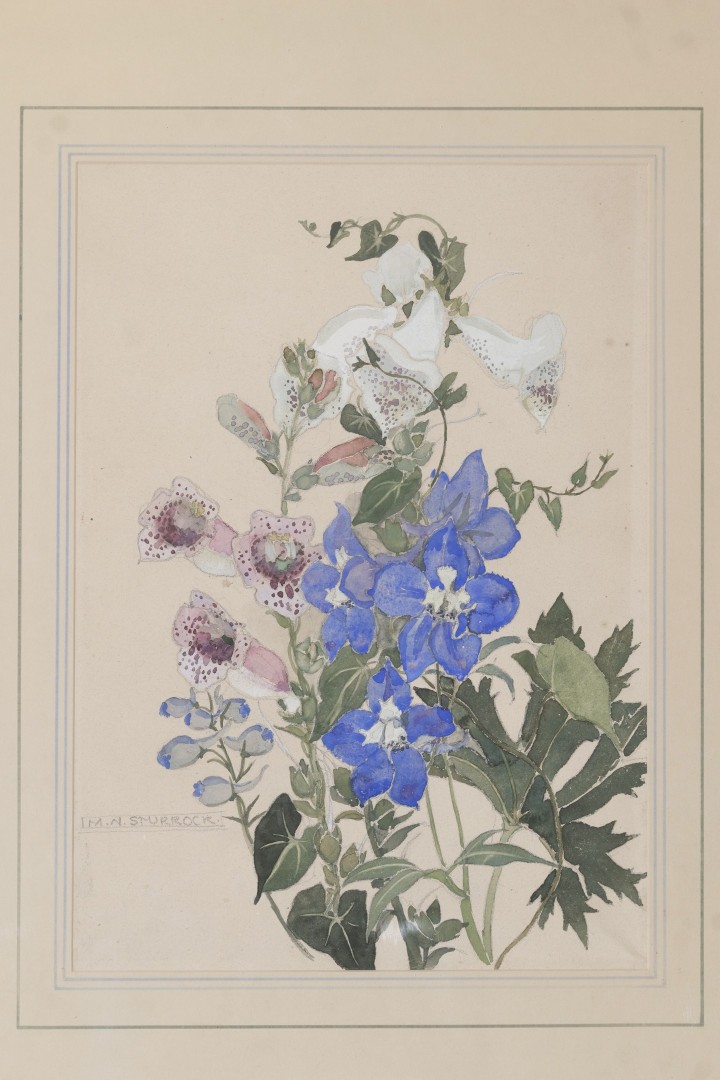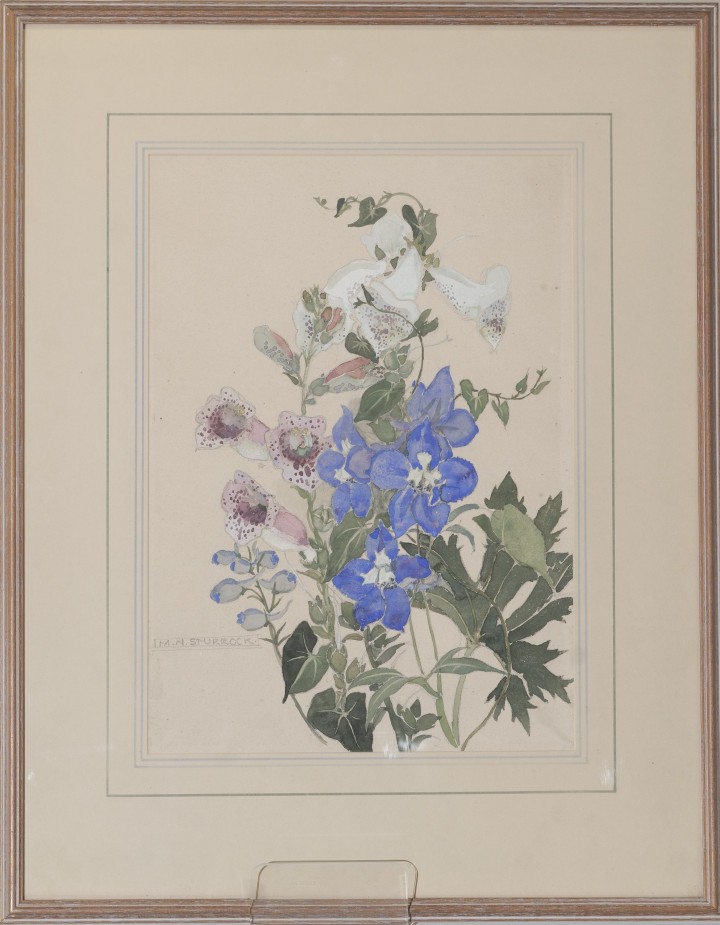Scottish Art News
Latest news
Magazine
News & Press
Publications
The Fleming Collection acquires ‘Delphinium and Digitalis’ (c.1915) by Mary Sturrock
By Charlotte Rostek, 25.09.2023

‘Delphinium and Digitalis’ (c.1915) by Mary Sturrock (1892–1985) is the latest acquisition by the Fleming Collection, gifted by the artist’s descendants. The work puts us in touch with much that resonates today of the Scottish avant garde of the artist’s time, female and male, not least the now famous Glasgow Style.
From the late 19th century to the decades after WWII, Sturrock did not merely form part of the texture of a changing art scene for women; she was both a product of and player in continual changes. Having lived until 1985 meant that she became a valuable source of information on the earlier decades of her life, almost bridging the women artists of her youth with their rediscovery as the ‘Glasgow Girls’ in the late 1980s.
Sturrock was born in 1892 to the celebrated director and visionary educator of Glasgow School of Art (GSA), Francis ‘Fra’ Newbery and Jessie Rowat Newbery, a highly innovative embroideress, ground-breaking teacher and part of a group of GSA-trained, progressive female artists who became known as the Glasgow Girls. Too young to be a first-generation Glasgow Girl herself, Sturrock trained in the slipstream of these female pioneers in embroidery and painting, specialising in botanical illustration.
Her family background and the vibrant artistic milieu she grew up in facilitated a wide web of friendships, connecting her with some of the most significant artists of the time. Among these were designer architect Charles Rennie Mackintosh and his artist wife Margaret Macdonald Mackintosh, close friends of her parents and the leading lights of the Glasgow Style. During a stay in Walberswick, Suffolk, Sturrock told Rennie Mackintosh the Latin names of the flowers and plants they were both studying.
‘Delphinium and Digitalis’ is in fact contemporary with the celebrated series of delicate watercolours produced by Mackintosh at the outbreak of WWI in the small coastal village. While the stylised signature is a nod to the Glasgow Style, Sturrock’s design is looser than Mackintosh’s, perhaps more naturalistic and carefully balanced with the botanical accuracy of the flowers.
Also in Suffolk, Sturrock befriended the Edinburgh College of Art-trained and precociously gifted Cecile Walton, daughter of EA Walton, an erstwhile collaborator with Mackintosh and one of the Glasgow Boys. In 1919, the women, along with Dorothy Johnstone (another prodigy with an impressive artistic pedigree) became female founder members of the progressive Edinburgh Group. They also had shared experience of the great artist, mentor and teacher Jessie M King in Kirkcudbright, whose style of book illustrations had a profound impact on Sturrock’s own work.
 Delphinium and Digitalis, Mary Sturrock, c.1915, image courtesy of the Fleming Collection
Delphinium and Digitalis, Mary Sturrock, c.1915, image courtesy of the Fleming Collection
The Edinburgh Group’s exhibition debut in 1919 included Anne Redpath, a promising young artist from Galashiels who became a towering influence post WWII, best loved for her vibrant still lives and domestic interiors. Sturrock and Redpath later formed a close friendship, exhibiting together at the Scottish Society of Women Artists of which Redpath became president in 1944. Fittingly, ‘Delphinium and Digitalis’ currently features in the Fleming Collection’s exhibition at Berwick-upon- Tweed – Anne Redpath and her Circle – drawing the watercolour into the richly colourful orbit of the Edinburgh School, the mid- century heirs to the Colourist tradition.
The Fleming Collection’s other, much-awaited exhibition, Scottish Women Artists: 250 Years of Challenging Perception,
at Dovecot Studios in Edinburgh delivers an impressive insight into two and a half centuries of female creativity, often opening up surprising perspectives. On display are two watercolours by Jessie Newbery, ‘Mother and Child’ and ‘Church Cottages, Walberswick’. It is a tribute to the Fleming’s consistent and discerning acquisition policy that Scottish female artists from this important era are increasingly well represented. They are part of an ever-growing, refreshingly broad-based, quality collection of Scottish art which is deployed through effective partnerships with imaginative and thoughtful curation.
Mary Sturrock’s painting, ‘Delphinium and Digitalis’ is currently exhibited in Anne Redpath and her Circle at The Granary Gallery, Berwick-upon-Tweed, until 5th November
Charlotte Rostek is an art and heritage curator, currently development lead for the Buccleuch Living Heritage Trust at Dalkeith Palace. She is the author of Scottish Women Artists, published by the Fleming-Wyfold Foundation in 2022




